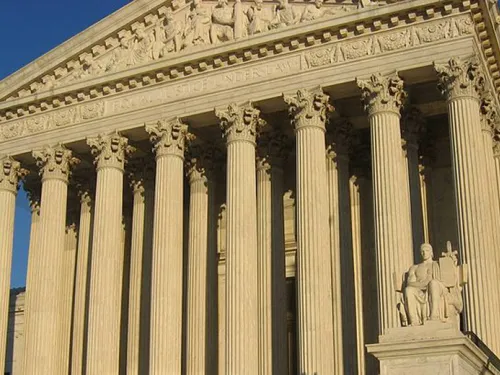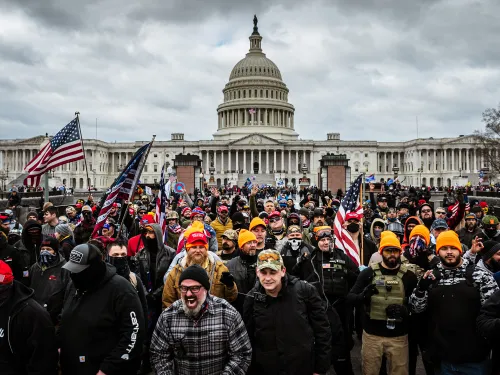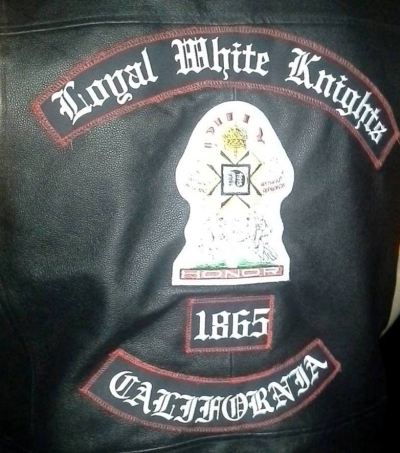by: Oren Segal
March 02, 2016
The Loyal White Knights (LWK) had every intention of holding a “White Lives Do Matter” protest on Saturday, February 27, 2016, at Pearson Park in Anaheim, California. But before the event could kick off, a bloody brawl erupted between Klan supporters and counter-protesters.
Klansmen, barely able to exit their cars, were suddenly swarmed by counter-protesters who wrestled Bill Hagan, the California LWK’s Grand Dragon, to the ground. Other Klan members were similarly attacked, and as the chaos continued, Klan members stabbed three counter-protesters, apparently with the tip of a flag pole, leaving one critically wounded.
Six Klansmen were arrested, but they were released on February 29, after law enforcement determined they were acting in self-defense. Seven anti-Klan-protesters were booked by the Anaheim Police Department on charges of assault with a deadly weapon and for elder abuse (after stomping on a senior Klan member).
(At any potentially inflammatory protest, separating the protesters from any counter-demonstrators is critical – it protects even the most hateful speech while ensuring the safety of everyone involved. This separation was clearly not achieved – or maintained – in Anaheim).
Like other Klan groups around the country, the Loyal White Knights say they represent the increasingly “endangered” white population, which they claim makes up a mere 9 percent of the world’s population. In fact, Klan groups themselves appear to be the only “endangered” entity: The ADL has identified about thirty active Klan groups in the United States, slightly down from the 2014 tally. Most Klan groups range in size from small to very small; chapters are often comprised of a single local member.
As a feint against their diminishing influence, Klan groups continue to use attention-getting stunts to attract publicity. For example, in 2015 the International Keystone Knights made headlines for appealing an “adopt a highway” court ruling in Georgia while the Knights Party drew media attention after sponsoring a pro-white billboard in Arkansas.
The most common Klan tactic, however, continues to be the use of fliers to broadcast their racist, anti-Semitic, homophobic, and increasingly Islamophobic message. In 2015, the ADL counted 85 Klan fliering incidents, an increase from 73 incidents in 2014. In the last six months, the very small California Loyal White Knights group has caused an outsized stir in a number of California cities, including Whittier, Santa Ana and Anaheim, as neighbors discovered candy and rock-filled bags with pro-Klan messages on their front lawns. As the Anti-Defamation League has previously noted, this leafleting activity is actually a desperate publicity tactic, and reflects Klan groups’ declining stature and membership.
Today’s Klan groups tend to be irresolute, short-lived and in a constant state of flux.More than half of the currently active Klans were formed just in the last five years. While a few longstanding Klans, still exist, they are mere shadows of their former selves. In fact, two prominent Klans disbanded in Late 2015: Morris Gulett’s Louisiana-based Aryan Nations Knights and Ron Edward’s Kentucky-based Imperial Klans of America.
As befits the groups’ shrinking ranks, public Klan events are increasingly rare. There were only two public Klan events of consequence in 2015. In July, members of the Loyal White Knights and the Trinity White Knights joined members of the neo-Nazi Nationalist Socialist Movement in protesting the removal of the Confederate flag from the South Carolina State House. In March, approximately 20 Klansmen rallied in Montgomery, Alabama, at an event honoring Martin Luther King, Jr.
In the 1920s, according to some historical accounts, Anaheim’s Pearson Park was the site of events that attracted upwards of 20,000 Klan supporters. This past weekend’s protests and violence involved six Klan supporters -- and while that certainly epitomizes the state of today’s Klan, the group’s historical baggage and undeniable notoriety means that even one Klan member has the potential to spark considerable pain and upset.










